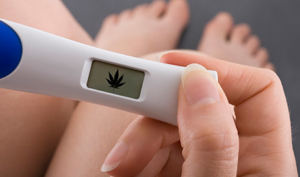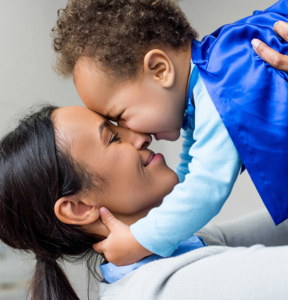Cannabis
Cannabis — also called marijuana, ‘weed,’ or ‘pot’ — can be smoked, inhaled (vaped), eaten, or applied as a cream. Available cannabis products contain one or both of two common compounds: tetrahydrocannabinol (THC) and cannabidiol (CBD). THC, the main active ingredient in many products, makes cannabis intoxicating, giving users a “high.” CBD is not intoxicating and is reported to have a wide range of medical benefits.
With the recent legalization of cannabis in Canada, it is incredibly important to be aware of the potentially harmful effects of cannabis — either THC or CBD products — on a healthy pregnancy and your baby’s development.
Cannabis is the most commonly used recreational drug among pregnant women. In one Canadian study, 4.5% of pregnant women said they used cannabis during pregnancy. Seventy percent of women surveyed believe that there’s a “slight risk” or “no risk” of harm from using cannabis once or twice a week during pregnancy.
While research still doesn’t give us all the answers about the effects of cannabis — either THC or CBD — on pregnancy and the baby’s development, for now, the only safe amount of cannabis to use while pregnant or breastfeeding is zero.
Why take the chance?

There is not enough clinical evidence to accurately determine the benefits, risks, or safety of using cannabis while pregnant or when breastfeeding. With over 400 active chemicals in cannabis, it is difficult to know which may be harmful to your baby and the levels of THC in cannabis are not standardized. The concentration of THC in cannabis has increased significantly in the last 30 years, from 3.2% in 1983 to 13%-23% in 2016. Since THC can cross the placenta to reach the baby and can be found in breastmilk, consuming any amount of cannabis could affect your baby’s development.
It has been difficult to determine the effects of cannabis during pregnancy and breastfeeding since women may be hesitant to report that they are using cannabis and how often. Many women also combine tobacco with cannabis, so it can be hard to determine the separate effects of tobacco and cannabis while a woman is pregnant or when breastfeeding. It is important to be open with your health care provider about your cannabis use. Your provider can offer advice and resources to help eliminate or limit cannabis use during your pregnancy and present strategies to avoid exposing your baby to cannabis while breastfeeding. It is also important for your health care provider to have a record of your cannabis use during pregnancy, as this information may be helpful for you and your child’s future health.
Until we have more answers, avoiding use of cannabis — either THC or CBD — while planning a pregnancy, during pregnancy or when breastfeeding remains the safest option for you and your baby.
Effects on your baby

Cannabis in all forms may affect your baby’s brain development and may result in learning and behavioural issues that last throughout their life. Using cannabis during pregnancy increases the risk of:
- Low birth weight
- Preterm labour
- Long-term health problems related to cardiovascular and mental health
- Short- and long-term learning, development, and behavioural issues, including low IQ scores, impulsivity and hyperactivity in childhood, some of which may persist into adulthood.
We’re working hard to understand the science and gather more evidence, but we’re just not there yet. Until we know more, it is best to avoid cannabis during pregnancy or when breastfeeding.
Alternative options
There is no evidence that cannabis helps relieve nausea and vomiting in pregnancy. Some alternatives to cannabis to help treat nausea during pregnancy include:
- Eating small meals or snacks often so your stomach doesn’t get empty
- Eating a few dry crackers or salty potato chips to settle your stomach
- Staying hydrated and not skipping meals
To learn more, please visit: Nausea and Vomiting

